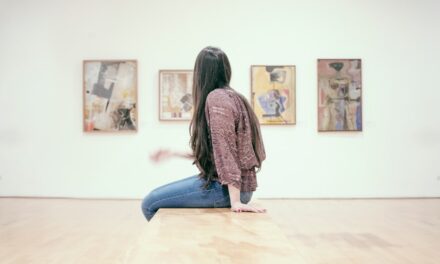The art of creating realistic textures with pencil is a skill that transcends mere representation; it is an exploration of the interplay between light and shadow, form and surface. Textures breathe life into drawings, transforming flat images into dynamic representations that engage the viewer’s senses. Whether it is the roughness of bark, the smoothness of silk, or the ruggedness of stone, mastering pencil textures allows artists to convey a deeper narrative within their work.
This article delves into various techniques and approaches to achieve realistic textures using pencils, providing insights that can elevate your artistic practice.
Textures can evoke emotions and set the mood of a piece, guiding the viewer’s experience.
By learning to replicate the subtleties of different surfaces, artists can create a more immersive and believable world within their drawings. This exploration will cover specific techniques for wood, stone, and fabric textures, as well as blending and shading methods that enhance realism. Additionally, we will discuss how to add depth and dimension to your work, experiment with different pencil grades, and apply final touches that bring your textures to life.
Summary
- Realistic pencil textures add depth and dimension to artwork, bringing it to life.
- Creating realistic wood textures with pencil involves using different pencil strokes and shading techniques to mimic the grain and texture of wood.
- Achieving realistic stone textures with pencil requires attention to detail and the use of various pencil grades to capture the rough and uneven surface of stone.
- Mastering pencil techniques for fabric textures involves understanding the drape, folds, and patterns of different fabrics, and using shading and blending to create a realistic texture.
- Blending and shading techniques are essential for creating realistic textures with pencil, as they help to add depth and dimension to the artwork.
Creating Realistic Wood Textures with Pencil
Wood is a material rich in character, with its unique grain patterns and variations in colour and tone. To create realistic wood textures with pencil, one must first observe the natural world closely.
Begin by sketching the basic shape of the wood piece you wish to depict, paying attention to its contours and any distinctive features. Once the outline is established, focus on the grain. Using a sharp pencil, draw fine lines that mimic the natural flow of the wood grain, varying their thickness to reflect the irregularities found in real wood.
Shading plays a crucial role in achieving depth in wood textures. By employing techniques such as hatching and cross-hatching, you can create a sense of volume and dimension. Start with lighter strokes to establish the base tone of the wood, gradually building up darker areas where shadows naturally occur.
Remember that light sources will affect how you shade; consider where the light hits the surface and where shadows fall. The interplay between light and dark will enhance the three-dimensional quality of your drawing, making it appear more lifelike.
Achieving Realistic Stone Textures with Pencil
Stone textures present their own unique challenges and opportunities for artistic expression. The ruggedness and solidity of stone can be captured through careful observation and technique. Begin by selecting a type of stone you wish to replicate—granite, marble, or slate, for instance—and study its characteristics.
Notice the colour variations, the presence of veins or speckles, and how light interacts with its surface. Once you have a clear understanding of your chosen stone’s features, sketch its outline before moving on to texture. To create the illusion of stone’s hardness and depth, use a combination of stippling and shading techniques.
Stippling involves creating texture through small dots or marks, which can effectively represent the roughness of stone surfaces. Layer these dots to build up darker areas while leaving some spaces lighter to suggest highlights. Additionally, employ smooth shading for areas that appear polished or reflective, such as marble.
The contrast between rough and smooth textures will add complexity to your drawing, making it more visually engaging.
Mastering Pencil Techniques for Fabric Textures
Fabric textures are diverse and can range from soft and delicate to coarse and heavy. To master fabric textures with pencil, it is essential to understand how different materials behave under light. For instance, silk has a smooth surface that reflects light beautifully, while burlap has a rougher texture that absorbs it.
Begin by selecting a fabric type to study closely; observe how it drapes and folds, noting the way light creates highlights and shadows across its surface. When drawing fabric, start with light pencil strokes to outline the basic shapes and folds. Pay attention to how fabric gathers and falls; these details are crucial for conveying realism.
Use blending techniques to create smooth transitions between light and shadow areas, particularly for softer fabrics like cotton or silk. For coarser materials like wool or denim, employ more textured strokes to capture their unique characteristics. The key is to vary your approach based on the fabric type while maintaining an overall sense of cohesion in your drawing.
Blending and Shading Techniques for Realistic Textures
Blending and shading are fundamental techniques that can significantly enhance the realism of pencil textures. These methods allow artists to create smooth transitions between tones, adding depth and dimension to their work. One effective way to blend is by using a blending stump or tortillon; these tools help smudge pencil marks together seamlessly, creating soft gradients that mimic natural surfaces.
When blending, start with lighter tones and gradually introduce darker shades to maintain control over the process. Shading techniques such as hatching, cross-hatching, and stippling can also contribute to realistic textures. Hatching involves drawing parallel lines close together to create shadowed areas, while cross-hatching adds another layer of lines at an angle to deepen shadows further.
Stippling can be used in conjunction with these methods to add texture without overwhelming the drawing with heavy lines. Experimenting with these techniques will allow you to find your unique style while achieving lifelike representations of various surfaces.
Tips for Adding Depth and Dimension to Pencil Textures
Layering Techniques
Use darker tones in areas that are further away from the light source while leaving highlights where light directly hits the surface. Another technique for adding depth is layering your pencil strokes. Start with a base layer of light shading before gradually building up darker tones in specific areas.
The Importance of Negative Space
This gradual approach allows for more control over the final appearance of your texture. Additionally, incorporating negative space—areas left blank or lightly shaded—can enhance the perception of depth by providing contrast against darker regions.
Creating Compelling Textures
By thoughtfully considering both light and shadow as well as layering techniques, you can create compelling textures that draw viewers into your artwork.
Experimenting with Different Pencil Grades for Varied Textures
The choice of pencil grade can dramatically influence the texture achieved in a drawing. Pencils are graded on a scale from H (hard) to B (soft), with F representing a fine point in between. Hard pencils produce lighter marks that are ideal for fine details and subtle textures, while softer pencils yield darker marks suitable for bold shading and rich textures.
Experimenting with different grades allows artists to discover how each affects their work’s overall appearance. For instance, when creating delicate textures like skin or silk, using H or F pencils can help achieve fine details without overwhelming the drawing with darkness. Conversely, when depicting rough surfaces like bark or stone, B pencils can provide the necessary depth and richness in tone.
By combining various grades within a single piece—using harder pencils for highlights and softer ones for shadows—you can create a dynamic range of textures that enhances your artwork’s realism.
Final Touches and Finishing Details for Realistic Pencil Textures
The final touches in a pencil drawing are often what elevate it from good to exceptional. Once you have established your textures through careful shading and blending, take a step back to assess your work as a whole. Look for areas that may need additional refinement or contrast; sometimes, adding just a few more highlights or deepening shadows can make all the difference in achieving realism.
Consider using an eraser creatively as well; it can serve as a tool for lifting graphite to create highlights or refine edges where necessary. Additionally, applying fixative spray can help preserve your work while enhancing its visual impact by preventing smudging. Finally, framing your artwork thoughtfully can also contribute to its overall presentation, allowing viewers to appreciate the intricate textures you have painstakingly created.
With these final touches in place, your realistic pencil textures will not only captivate but also resonate with those who experience them.
If you are interested in exploring different textures in art, you may also enjoy reading about the painting “The Tiger” (1912) by Franz Marc. This article provides an introduction to the vibrant and dynamic artwork, offering insights into the artist’s use of colour and form. Click here to learn more about this captivating piece.


